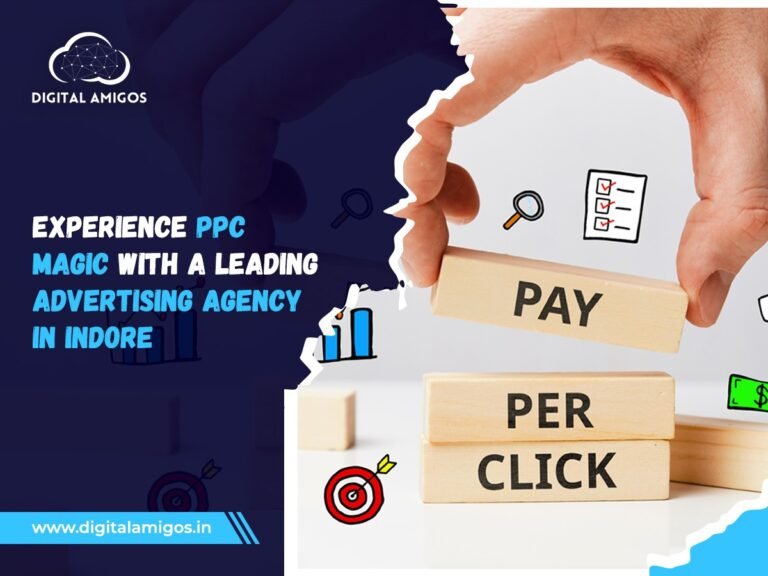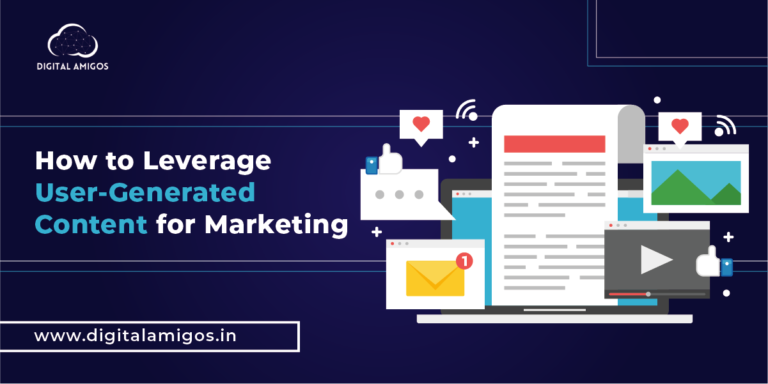What is Blogging in Digital Marketing? Benefits, SEO Role & Lead Impact
In today’s digital age, where businesses are constantly battling for visibility, blogging has remained a silent powerhouse. With so many new platforms and tools emerging every year, you might wonder: Is blogging still relevant? The answer is a solid yes—especially when it comes to digital marketing.
If you’re new to this field or trying to refine your strategy, this blog is your go-to guide on what blogging means in digital marketing, how it helps with SEO, brand authority, lead generation, and much more. This article will also walk you through the benefits, best practices, and the evolving role of blogging in the modern marketing landscape.
What is Blogging in Digital Marketing?
Blogging in digital marketing refers to the practice of creating and publishing written content (blogs) on a website to attract, engage, and convert potential customers. The primary objective isn’t just storytelling—it’s providing value, solving user problems, and positioning your brand or business as a trustworthy authority.
Whether you’re selling software, services, or products, blogging helps you:
A blog typically:
- Targets specific keywords your audience is searching for
- Provides answers to real customer problems
- Builds a content library that brings in organic traffic over time
Unlike advertisements, which interrupt users with a pitch, blogs offer value upfront. This helps you build trust before the sale, positioning your brand as a helpful, knowledgeable resource.
For example:
A SaaS company might write a blog post on “Top 5 Productivity Tools for Remote Teams”. That article not only provides value to a reader but also subtly introduces their own tool as one of the options.
How Blogging Supports the Digital Marketing Funnel
Think of the digital marketing funnel in three stages:
Top (Awareness) → Middle (Consideration) → Bottom (Conversion)
Blogging supports every level:
Top of Funnel (TOFU) – Awareness
Here, your blogs introduce users to a problem or topic.
Example: “What is Digital Marketing and Why Does It Matter?”
Goal: Drive traffic and brand visibility by ranking for informational keywords.
Middle of Funnel (MOFU) – Consideration
These posts educate readers and offer comparisons, tips, or guides.
Example: “5 Blogging Tools Every Marketer Should Use”
Goal: Build trust and keep users engaged as they explore solutions.
Bottom of Funnel (BOFU) – Decision
These blogs often target long-tail or branded queries.
Example: “How Blogging Helped a Small Business 3x Its Leads in 6 Months”
Goal: Convert traffic into leads or customers with a strong CTA.
When written with the audience in mind and structured around a clear blog content plan, your posts are more likely to resonate, rank, and convert.
SEO and Blogging: A Powerful Combination
Blogging is often the backbone of on-page SEO. Every blog post gives you a chance to rank for relevant keywords, address user intent, and add internal links.
Keyword Strategy
Blogging enables you to target:
- Primary keywords (e.g., what is blogging in digital marketing)
- Secondary keywords (e.g., content strategy, SEO blogging)
- Long-tail queries (e.g., how to use blogs for lead generation)
- LSI keywords (e.g., organic traffic, authority building, inbound marketing)
With careful placement in headers, meta descriptions, and content body—blogs help search engines understand your topic coverage.
Fresh Content Signals
Regular blog updates show Google that your website is active and relevant, boosting domain authority and improving crawl frequency.
Link Building Opportunities
Useful blog posts often earn backlinks naturally from other websites, which remain one of the top Google ranking signals.
Blogging vs. Other Marketing Channels
| Aspect | Blogging | Social Media | Email Marketing |
| Lifespan | Long-term (months/years) | Short-term (hours/days) | Mid-term (days/weeks) |
| SEO Benefits | High | Low | Low |
| Cost | Low after setup | Ongoing ad budget | Tool + content costs |
| Audience Intent | High (users search with intent) | Low to medium | High (existing audience) |
| Lead Generation | Passive | Active with paid ads | Strong for nurturing |
Each channel has its value, but blogging uniquely combines long-term visibility with low ongoing costs.
Key Benefits of Blogging in a Digital Strategy
Let’s explore the top benefits that make blogging a must-have in your digital marketing mix.
1. Attracts Organic Traffic
Blogs target search intent-based queries like:
- What is blogging in digital marketing?
- Why blog for business?
- Blogging vs social media marketing
By answering these questions, blogs bring high-intent visitors without needing paid campaigns.
These posts, optimized around relevant keywords and backed by a strong blog marketing strategy, continuously fuel your organic traffic growth over time.
2. Builds Topical Authority
A site that consistently covers a specific niche (e.g., skincare, tech tools, health tips) builds topic clusters. These signal to search engines that you’re a trustworthy source on that subject—boosting ranking potential.
3. Improves Time-on-Site & Reduces Bounce Rate
Well-written blogs keep readers engaged, increasing time on site—another SEO-friendly metric. Related posts, CTAs, and embedded videos further reduce bounce rates.
4. Creates Shareable Content for Social Media
You can repurpose blog snippets, quotes, or data into:
- LinkedIn articles
- Instagram carousels
- X (Twitter) threads
- Facebook posts
This ensures consistent content flow across platforms without constantly reinventing the wheel.
5. Drives Qualified Leads
By including lead magnets, form fills, or scheduling buttons in your blog (without being pushy), you give readers a chance to take the next step—turning traffic into leads.
Essential Technical Elements for an SEO-Optimized Blog
It’s not just about writing. A blog that ranks and performs well includes several behind-the-scenes elements:
Topic Relevance
Don’t just write blogs because you “have to.” Each blog should address a specific problem or question your target audience has.
Use tools like:
- Google’s “People also ask”
- AnswerThePublic
- SEMrush or Ahrefs for keyword clusters
Title & Meta Description
- Title should include the primary keyword
- Meta description should be compelling, under 155 characters, and include semantic terms
Header Structure (H1, H2, H3)
- H1: Only once (title)
- H2s: Main sections
- H3s: Supporting points or subtopics
This structure improves both readability and crawlability.
Alt Text for Images
Use descriptive alt tags with LSI keywords—this improves accessibility and helps with image SEO.
Internal Linking
Link to relevant pages on your website (services, related blogs, landing pages). This improves session duration and spreads link equity.
Page Speed & Mobile Optimization
Fast-loading blogs are preferred by both users and search engines. Use compressed images and mobile-responsive themes.
How to Write Blog Content That Ranks & Converts
Even with SEO in place, your blog needs to deliver real value to the reader. Here’s what makes the difference:
Focus on User Intent
Answer the question behind the keyword. For example, a user searching “how blogging helps SEO” doesn’t want fluff—they want real, actionable insights.
Go In-Depth
Surface-level content rarely ranks anymore. Include:
- Data
- Examples
- Case studies
- Comparisons
- Visuals
Google’s Helpful Content Update now rewards expertise, depth, and originality.
Use Natural Language
Don’t over-optimize. Write as you speak—but with structure and flow. NLP algorithms like BERT and MUM can now understand context over keywords.
Use Topic Clusters
Instead of one-off articles, group blogs by themes.
E.g., A digital marketing site could have:
- Cluster: Blogging
- What is blogging in digital marketing?
- Best blogging tools
- Blogging SEO checklist
- Blogging vs vlogging
- What is blogging in digital marketing?
Interlink them to build topical authority.
Long-Term Blogging Strategy
If you want consistent results, treat blogging like an asset, not a task.
Set SMART Blogging Goals:
- Get 10k monthly organic visits in 6 months
- Rank top 5 for 10 commercial keywords
- Convert 5% blog traffic into leads
Maintain a Blog Calendar:
- Plan weekly or biweekly posts
- Mix formats: how-tos, case studies, listicles, guides
- Align with product launches, seasons, or campaigns
Measure & Optimize:
Use Google Analytics & Search Console to track:
- Traffic sources
- Keywords ranking
- Click-through rates (CTR)
- Top-performing posts
Update blogs every 3–6 months with:
- New data
- Refreshed titles
- Internal links to newer content
- Improved readability
🚫 Common Mistakes to Avoid
Even skilled marketers fall into these traps:
- ❌ Targeting keywords without checking search intent
- ❌ Writing only for Google, ignoring readers
- ❌ Ignoring formatting (huge blocks of text repel readers)
- ❌ Not promoting the blog—SEO is only half the job
- ❌ Publishing inconsistent, unstructured content
Your blog must serve the reader first, or even perfect SEO won’t help.
Real-World Use Cases of Blogging in Digital Marketing
A Local Bakery
Starts blogging on “eggless baking recipes” and “gluten-free cake tips.” They begin ranking locally for these terms and attract health-conscious customers organically.
A Fitness Coach
Posts detailed guides on workouts, meal plans, and motivation. These blogs lead visitors to download free eBooks and eventually sign up for personalized plans.
A Tech Startup
Creates case studies, feature tutorials, and thought leadership blogs. Their organic traffic increases, and backlinks from industry sites build domain authority.
These examples prove that blogging isn’t limited to any one industry—it works wherever there’s a target audience looking for information.
Final Words
Blogging is far more than just writing—it’s a strategic digital marketing engine that drives SEO, brand awareness, and lead generation.
When you approach blogging with a long-term mindset—one that values quality, strategy, and consistency—you build an asset that grows in value month after month.
Whether you’re a solo founder, marketer, or agency, starting a blog (and doing it right) can transform how your brand appears in search, how your audience interacts with your content, and how many leads or sales you generate over time.
And the best part? Unlike ads that disappear when the budget runs dry, a good blog keeps working for you—even while you sleep.
Frequently Asked Questions (FAQs)
1. Is blogging still relevant in digital marketing in 2025?
Absolutely. Blogging remains one of the most effective tools in digital marketing for driving organic traffic, improving SEO rankings, building brand authority, and nurturing leads. With search engines focusing on helpful content and user intent, high-quality blogs are more valuable than ever.
2. How does blogging help with SEO?
Blogging supports SEO by allowing you to target relevant keywords, build internal links, increase page freshness, and earn backlinks. A well-optimized blog post helps improve your website’s visibility in search results and brings in consistent organic traffic over time.
3. What kind of topics should I cover in a marketing blog?
Focus on topics that address your audience’s questions, pain points, and interests. Educational content, how-to guides, industry insights, case studies, and product comparisons are excellent options. A strong blog content plan should align with each stage of the customer journey.
4. Can blogging generate leads and sales?
Yes. Blogs attract targeted traffic and guide readers through the awareness and consideration stages. When paired with strategic calls-to-action (CTAs), lead magnets, or internal links to service pages, blog content can convert readers into leads and paying customer







